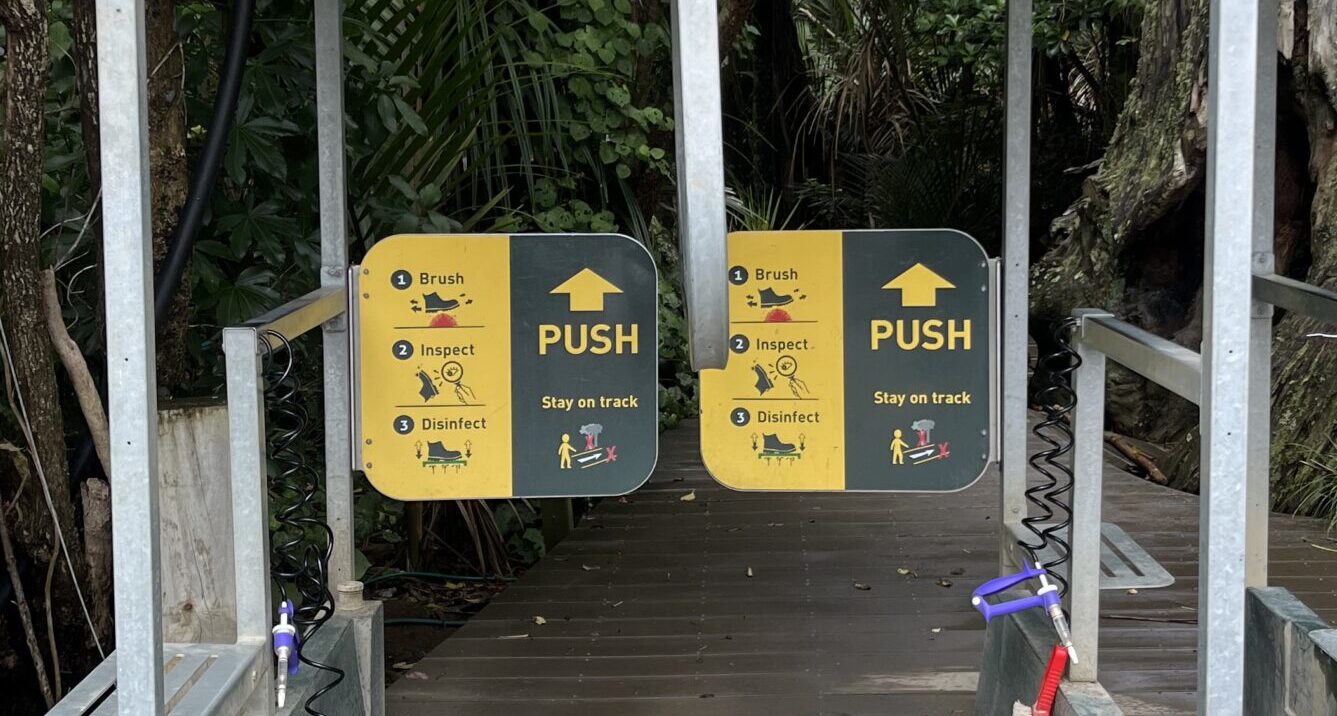
Joshua Rosenstein

Joshua Rosenstein
When most people think of New Zealand, the first thought that comes to mind is a beautiful country with extraordinary scenery. And, well, that is a pretty accurate summary if you are an avid outdoor enthusiast. In addition to spectacular natural wonders, New Zealand’s geographic isolation creates a home for several unique species of plants and animals native to the country. One such species is the Kauri (Agathis australis) tree, which is found on the North Island of New Zealand. Not only is the tree a keystone species, but it is also sacred to the Indigenous people of New Zealand, the Maori.
“As the story goes, the Kauri tree separates the sky from the earth and holds the sky up, while still letting sunlight in. And if you’ve seen a big Kauri tree, you would understand why the Maori people had this belief,” explained Tony Dunn, a senior guide for 13 years for a New Zealand tour company called Bush and Beach. Along with tours, he conducts and oversees pest control work and is deeply involved with Kauri tree protection.
Unfortunately, a deadly pathogen (Phytophthora agathidicida) informally known as Kauri Dieback threatens Kauri trees. The disease is a water mold that takes up in the roots and attacks the bark of the tree, which suffocates and kills it. It is spread through the soil, so the movement of people, animals, and water all spread the pathogen. Kauri Dieback’s ability to spread easily and unbeknownst to the spreader makes it a dangerous disease for the tree. A leisurely walk in the woods might result in mud on one’s shoes, which can then spread the disease during future outings. The same can be said with animals in the parks.

The New Zealand Department of Conservation works hard to limit the spread of Kauri Dieback. Some of the initiatives include quarantining areas where the disease is prevalent, installing raised boardwalks around Kauri trees to prevent pedestrian traffic on the soil, and adding cleaning stations at the entrance and exits of many forest trails. Dunn believes these actions are working.
“A lot of the work now is monitoring. We did an initial survey to see what trees had the disease, but now we need to go back and see how it’s spread,” said Dunn. His initial observations indicate that the spreading has slowed down, which is a positive sign.
Another effort aimed at protecting critically vital species, as well as agriculture, is airport biosecurity. Australian and New Zealand airports have strict biosecurity checks to make sure that no potentially harmful diseases or non-native species were unknowingly brought into the country. These checks included a ban on fruits, vegetables, meat, nuts, grains, and many other foods, as well as inspecting any shoes that may have remnants of soil on them.
It is not currently known how or when Kauri Dieback entered New Zealand. “Our Kauris are the only ones that are affected by the disease,” stated Dunn. “It may have come into New Zealand from another country where the disease is dormant, and it only became active due to the specific climatic conditions of New Zealand. That links back to the airport biosecurity, because it is possible that someone brought in the disease from dirt on their shoes.”

All of these actions to limit the spread of a disease not native to New Zealand begs the question of why most other countries lack the extensive measures that Australia and New Zealand enforce so diligently. Tree diseases plague the United States and other countries as well, yet shoe cleaning stations for hikes are rare, and usually include just a brush, while biosecurity checks at airports are largely nonexistent.
Dunn suggested that the added cost of biosecurity screening represents a barrier to their implementation globally. This process has been a part of New Zealand’s airport infrastructure since the Biosecurity Act 1993, but it would take time and money for other countries to implement it. When asked why he thought New Zealand might be uniquely positioned to tackle the cost of biodiversity, Dunn posited the nation’s intense care for and appreciation of the environment.
“New Zealanders and especially the Maori people have a strong connection with nature,” Dunn said. “That connection leads to a sense of protection.”